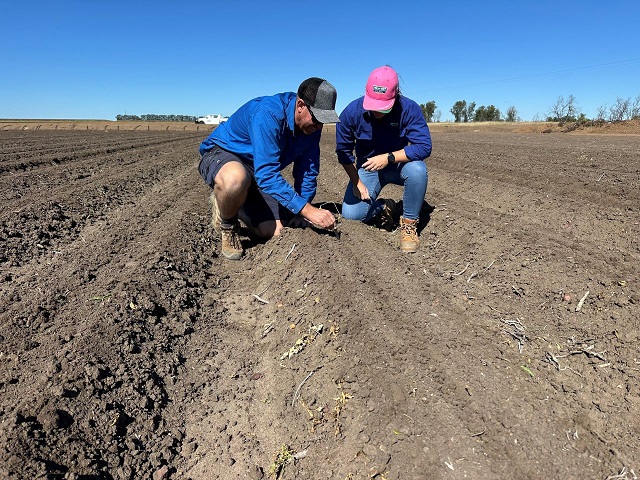The 2025/26 cotton season is officially underway in Australia, with the first plantings beginning in the Central Highlands. In a unique twist, some growers in the region are still finishing last season’s harvest while preparing fields for the new crop.
From Harvest to Planting in Days
Emerald grower Aaron Kiely has already planted 70 hectares of his planned 95-hectare cotton program. Only days earlier, he was still picking last season’s cotton after choosing to extend part of the crop’s lifecycle for an additional 90 days.
This strategy, known as “growing-on,” involved added costs in water, fertilizer, and crop management. But it delivered strong yields, allowing Kiely to maximize returns before transitioning directly into the new season’s planting.
Strong Soil Health and Smart Rotation
The early planting was supported by healthy seedbeds and good soil moisture. Crop rotation with mung beans, mulching, and root cutting after harvest improved soil condition and aided stubble breakdown, creating an ideal base for the next crop.
“With the soil in good shape and moisture at the right level, the timing was perfect for us to start early,” Kiely explained. Rising day and night temperatures have also provided favorable conditions for germination.
Water Challenges for Larger Plantings
Other growers in the Central Highlands are preparing to sow as well. Local farmer Ross Burnett plans to plant around 840 hectares across two farms. However, with no confirmed water allocation so far, he is relying on carry-over reserves and rainfall to sustain the crop.
This highlights one of the biggest challenges for Australian cotton in 2025/26: managing water availability amid unpredictable climate conditions.
Outlook for Australia’s Cotton Industry
Nationally, cotton planting is expected to cover around 400,000 hectares this season, concentrated in Queensland and New South Wales. While early plantings in the Central Highlands are encouraging, overall production is forecast to be lower than last year due to tighter irrigation water supplies and softer global cotton prices.
Even so, Australia’s cotton industry remains a powerhouse. With more than 1,500 growers—90% of them family-owned—cotton contributes billions of dollars to the economy and plays a vital role in global textile supply chains.
The Bottom Line
The start of the 2025/26 cotton season in Emerald shows the adaptability and resilience of Australian growers. By rotating crops, maintaining soil health, and taking calculated risks on water and planting times, farmers are proving once again that cotton is not just a crop but a cornerstone of rural sustainability and economic growth.











